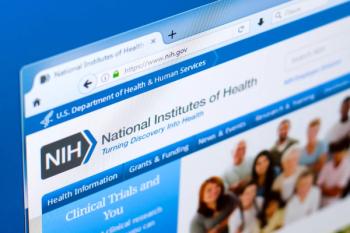
Dr Jan Berger on Challenges, Solutions to Address Excess Cost and Low-Value Health Care
Transitioning from population to precision health care, as well as eschewing old health care models of the past linked with misuse and excess cost, can assist in evolving the current US health care delivery system.
Transitioning from population to precision health care, as well as eschewing old health care models of the past linked with misuse and excess cost, can assist in evolving the current US health care delivery system, said Jan Berger, MD, MJ, president and CEO of Health Intelligence Partners, who also serves on the editorial board for The American Journal of Managed Care (AJMC®).
Transcript
AJMC®: Hello, I'm Matthew Gavidia. Today on the MJH Life Sciences™’ Medical World News®, The American Journal of Managed Care® is pleased to welcome Dr Jan Berger, president and CEO of Health Intelligence Partners, who also serves on the editorial board for AJMC®. Can you just introduce yourself and tell us a little about your work?
Dr Berger: Absolutely, thank you, Matt. As you heard from Matt, I am Jan Berger. I am the founder and CEO of Health Intelligence Partners, which is a health care consulting company that works with all the stakeholders within health care in order to improve outcomes, improve experience, and really make a change in health care, taking strategy to operations in order to get the outcomes that we're looking for.
AJMC®: Can you speak on the current state of the US health care delivery system when it comes to cost? And what are some factors that contribute to excess cost and low-value care?
Dr Berger: Well, that's a great question, and I have both bad news and good news. The bad news is we've priced the consumer out of the health care market. I would argue that's for a number of reasons. We hear about technology, and we hear about aging, and I don't believe that's the case. I believe we continue today to be focused on unit cost and not on investment. That creates a situation where everybody's looking for their piece of the pie, and not looking at the big picture, and that we can change the financial model, we can change the operational model. But unless we start to trust each other again and look at the big picture, we will not impact health care costs.
I think the second thing I want to talk about, when [talking] about cost and outcomes in health care, is if you were to go back to when I was a young physician in the late 1970s and 1980s, we were evolving from, interestingly, a personalized model in health care that had very little science and evidence and more experience to it. That's how I learned.
We then in the 80s, 90s, into the early 2000s went to what I would call evidence-based care, evidence-based guidelines, and population health. That was a really good thing. But I would argue over the last 10 years, science has changed but the health care model has not, and we need to transform ourselves from population health to precision medicine, and use all the science we have. And it's not just in cancer, it's much broader. We joke about the right patient for the right treatment and the right doctor in the right time and the right place, and each of those have new models of science that we're not using. We're still using the old models, and that creates many misuse and overcosting [of] things. I like to say with my clients that the wrong drug or the wrong treatment, regardless of the price, is misuse and dollars poorly spent. I really do believe we have to change that paradigm from population to precision.
AJMC®: How has the COVID-19 pandemic exacerbated cost-related issues in health care, and what benefits have virtual care provided, if any?
Dr Berger: Again, COVID-19, that's a very interesting question, because I think we can look at it in 2 ways. We can look at the first pandemic in 100 years, and all kinds of things that go along with that. There are a few, if any, who were alive for the last pandemic, and it is interesting that many of the challenges, if you go back and read 100 years ago, the challenges we have today are quite similar 100 years later.
One of those things is the fact that we have taken the challenges and problems in health care as a whole, pre-COVID, and put a magnifying glass over them. It [has] exacerbated all of the challenges that we have today. So, at a high level, I look at that. First and foremost is the issue of access. When I talk about access, I'm not talking about insurance access. I'm talking about regardless of your insurance, is there information and trusted sources of that information and people who we can turn to, as we like to say, in sickness or in health, where we can get the answers and the help we need.
So, if you think about who the access points and the trusted individuals for information are, different than 100 years ago, we have television beyond radio, we have social media beyond newspapers. So, information good and bad travels very quickly and in different routes, but who was there for us? Who did people listen to? Interestingly, I was involved in and reached out to 300 people in a survey and asked them, who did they look to for information and who gained trust and who lost trust during the first 90 days of COVID-19.
So, who won in this game of trust? Interestingly, employers, they became the chief communication officers. Even though they weren't the scientists, they were the communication line that existed. Second winners in this were the scientists. Many people didn't know the CDC or NIH [National Institutes of Health] or anybody else existed, or state medical officers. So, people turn to that as a source of truth. Third, who really raised themselves in the ranks was the health plans. So, interestingly, quite quickly, they reached out to the vulnerable and the high risk in ways they hadn't necessarily done in the past. The fourth who also raised their ranks and trust was the pharmaceutical manufacturers. The conversation stopped being about cost and what can they do and actually what have they done for many, many, many years, which is find and use new science to hopefully get some answers.
Who lost in this? Unfortunately, my peers—the physicians. They either didn't have the information, they were radio silent, they furloughed or closed practices because of their financial model. And they have a lot of work to do to regain trust. Now, telehealth helped with some of that, but in many, many cases, it was not the individual's personal relationship physician.
I know a woman who was going through both chemotherapy for cancer and some heart problems due to the chemotherapy and had a primary care physician–none of them were available for the first 90 days through telehealth or anything else. She was left to figure this out on her own. This is the access problem I am talking about. I think, again, we look at the mental health issues, the depression and anxiety. There is not one of us, probably in the world, that has not had some level of anxiety through this entire issue. We're not meant to not know what's going to happen tomorrow to us, the country, or the world.
Secondly is the SDOH, or the social determinants of health. Again, we thought of this as a very focused thing. How many of us, even those of us who could afford food and had a roof over our head, weren't sure how we were going to get food from the grocery store? If we had diabetes or other issues with our health associated with food, even a bigger challenge.
So, I think social determinants of health and mental health are national and international issues that affect all of us. And we still need a better way to address that. I do think virtual health came forward about 5 years earlier than it was supposed to. I think there are still challenges. I think there's opportunities, and I hope we don't just knee jerk reaction and [instead] take the time to think it through.
Newsletter
Stay ahead of policy, cost, and value—subscribe to AJMC for expert insights at the intersection of clinical care and health economics.














































